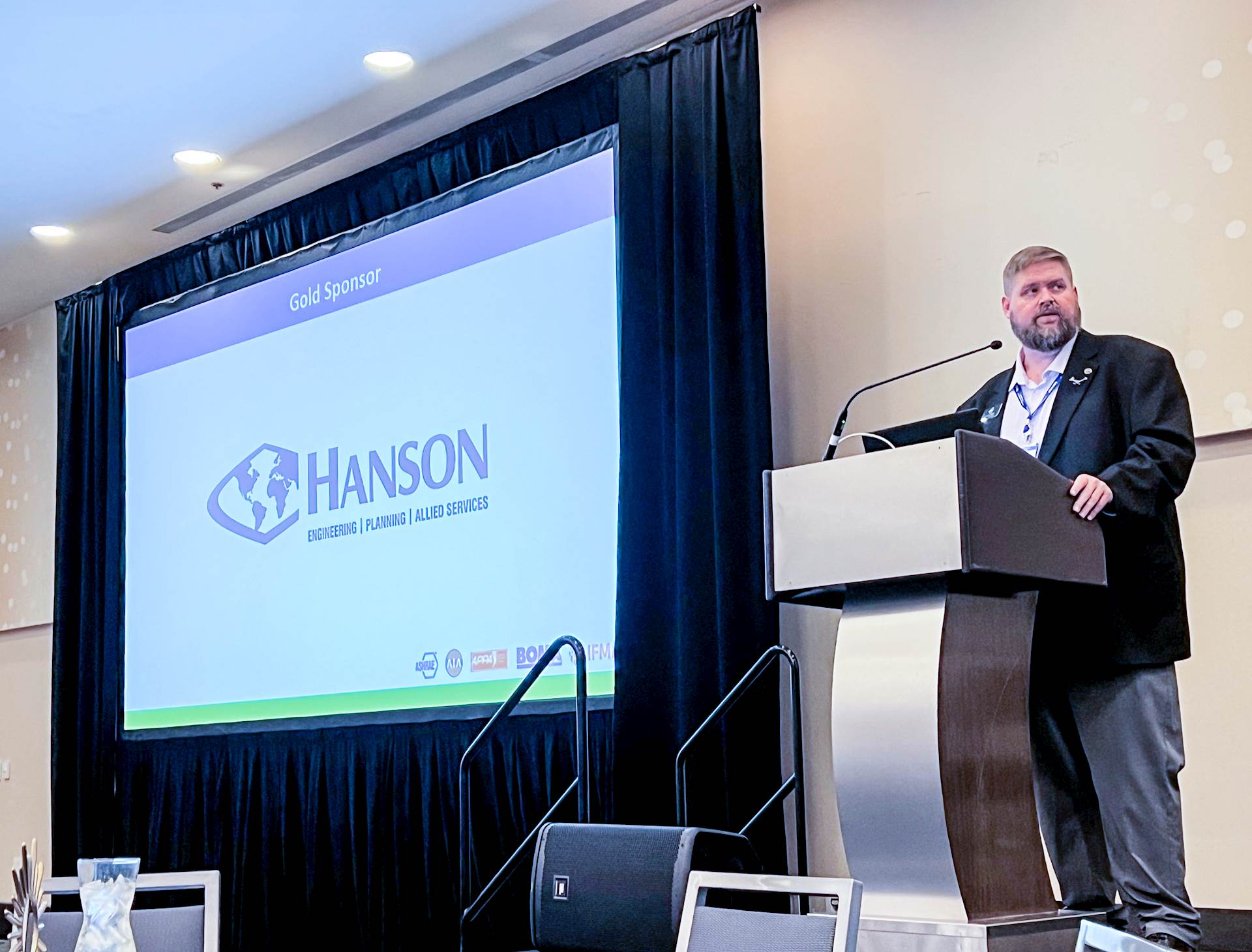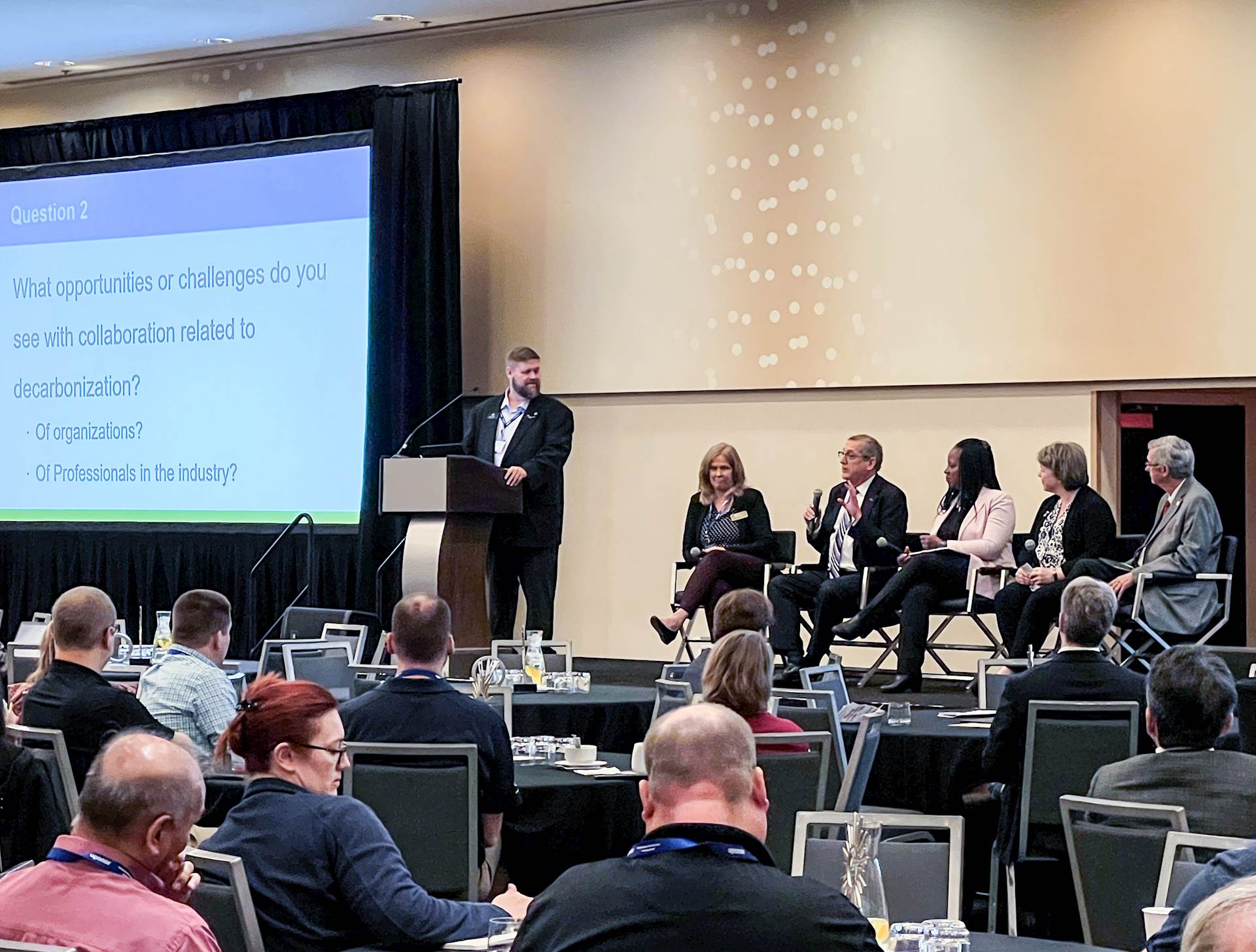
Wade Conlan opens the 2023 Decarbonization Conference for the Built Environment on Oct. 25 in Washington, D.C.
In late October, five organizations from the building industry — ASHRAE, the American Institute of Architects, APPA, the Building Owners and Managers Association International and the International Facility Management Association — held the 2023 Decarbonization Conference for the Built Environment in Washington, D.C., with the goal of discussing the design, construction, ownership and operation of facilities targeted for reduced or neutral impact on the environment with respect to carbon footprint.
As a primer, decarbonization is the process of reducing carbon dioxide emissions and other greenhouse gases in the atmosphere, with respect to all industries. Decarbonization is extremely important, because it helps reduce atmospheric carbon dioxide levels and mitigate the effects of global warming.
“The built environment generates nearly 40% of CO2 emissions annually with approximately 27% attributed to building operations, placing significant responsibility for reducing operational and embodied carbon emissions on the built environment industry,” said Laurie Gilmer, chair of IFMA’s global board of directors. “We must take the lead in ensuring that what we design, construct, operate and manage is achieved thoughtfully, strategically, collaboratively. Working together to reduce or reverse the harmful impacts of our buildings is empowering, but we need direction on how to go about it. ASHRAE’s decarbonization conference will help us integrate our perspectives to help our industry take meaningful action.”
 Wade moderates the “Industry Executive Roundtable” Oct. 26.
Wade moderates the “Industry Executive Roundtable” Oct. 26.
I was fortunate to be asked to chair the conference and was extremely pleased to see that in addition to a fantastic technical program that covered the basics, case studies on decarbonizing buildings as well as policies, attendees included representatives from 10 countries who are equally concerned with decarbonization and represented numerous fields in the building industry (such as architecture, engineering, education, healthcare and finance).
The program included several breaks that encouraged discussion with new friends who are concerned about decarbonization and offered different perspectives. Ginger Scoggins, the president of ASHRAE, said, "There was so much energy at this conference. It was great to see all different areas of the building sector come together to discuss how we are going to tackle the impact of buildings on global greenhouse gas emissions."
With decarbonization being such a critical topic, ASHRAE plans to provide a number of technical guides but, more importantly, have an International Building Decarbonization Conference April 17–19, 2024, in Madrid, Spain, and focus on tall buildings during the Building Decarbonization Conference in New York City in the fall of 2024.
As the chair of the decarbonization conference this year, I was honored to lead, and I want to congratulate the organizers for the steps they are taking to actively decarbonize the built environment while educating the industry on a smart path to overcome the climate crisis.
Talk about decarbonization with Wade Conlan by contacting him at wconlan@hanson-inc.com.